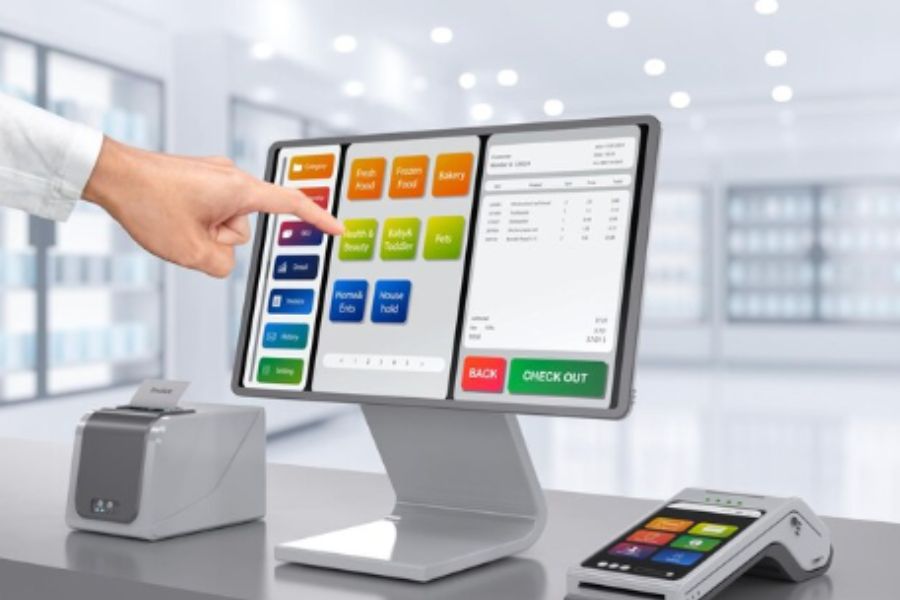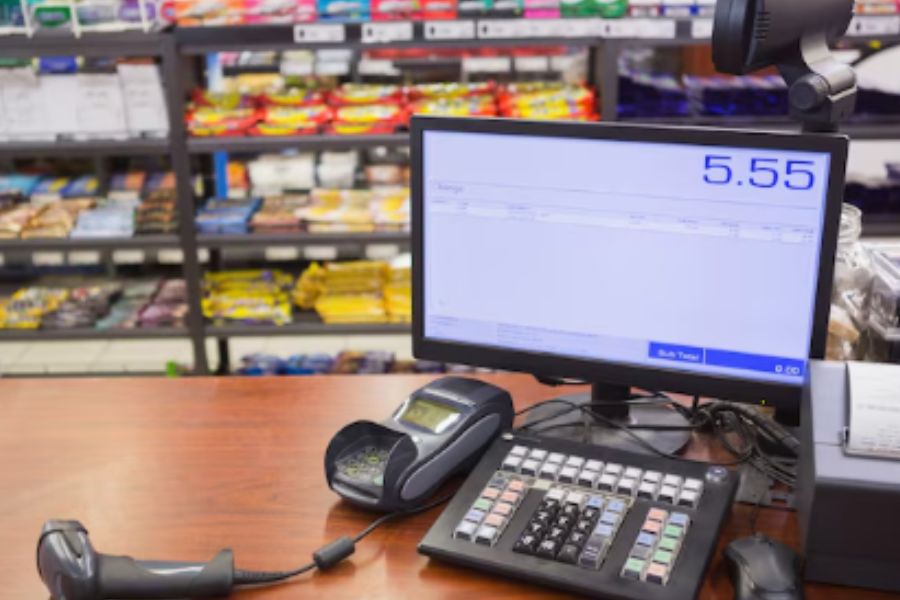In the dynamic landscape of retail, the backbone of convenience stores lies in a convenience store point of sale (POS). Understanding the cost dynamics of a convenience store POS is crucial for business owners seeking optimal solutions. From hardware intricacies to software subscriptions, various factors contribute to the overall expenditure. Understanding the financial aspects is essential for making informed decisions that impact the store’s daily operations and long-term growth.
Significance of a convenience store point of sale
A convenience store point of sale (POS) system plays a pivotal role in shaping the efficiency and success of convenience stores. Far beyond a mere transaction tool, the significance of a convenience store POS extends into every facet of store management, offering a comprehensive solution tailored to the unique needs of these fast-paced retail environments.
At its core, a well-designed POS system streamlines daily operations, providing convenience store owners with powerful tools for inventory management, sales tracking, and customer engagement. This efficiency not only ensures accurate and swift transactions at the checkout but also minimizes the complexities of managing diverse product offerings.
A convenience store POS system’s real-time data synchronization capabilities are instrumental in maintaining an up-to-date inventory and preventing stockouts or overstock situations. This dynamic management of inventory levels directly impacts the customer experience, as shoppers can consistently find the products they seek, fostering loyalty and satisfaction.
In the competitive landscape of convenience stores, where agility is paramount, a POS system’s scalability and adaptability are crucial. Whether expanding to multiple locations, integrating with e-commerce platforms, or incorporating new features, a convenience store POS evolves with the business, ensuring it remains agile and responsive to changing market demands.
Key factors influencing cost
Factors influencing cost in a convenience store point of sale (POS) system are diverse, encompassing various components and business-specific needs that collectively shape the overall investment. Understanding these factors is crucial for convenience store owners seeking an optimal POS solution:
POS system components
- Hardware costs: The hardware components of a POS system include terminals, touchscreens, cash drawers, receipt printers, barcode scanners, and card readers. Costs can vary based on the quality and complexity of the hardware. Full countertop setups may range from $1,000 to $2,500, while streamlined tablet-based systems can start at $300 to $500.
- Software costs: POS software often follows a subscription-based model, with monthly fees determined by factors like features, scalability, and integrations. For small to medium-sized convenience stores, basic POS software subscriptions with the POS solution ConnectPOS start at $39 per month for the Standard package, $69 per month for the Advanced package, and $89 per month for the Premium package. The entry-level package includes essential features, ensuring that businesses with simpler requirements have a cost-effective solution. There are also advanced solutions for larger enterprises seeking a comprehensive POS solution, with costs ranging from $69 to $89 per month for the Advanced and Premium packages. These advanced plans cater to businesses with scalability in mind, providing an array of features, integrations, and scalability to meet the demands of a convenience store.
- Peripheral devices: Additional devices, such as scanners, printers, and customer displays, contribute to the overall cost. Prices for these peripheral devices vary based on brand, functionality, and compatibility with the chosen POS system.
Business-specific needs
- Store size and layout: The physical dimensions and layout of the convenience store influence the number and type of POS terminals and peripherals required. Larger stores with multiple checkout points may incur higher hardware and software costs.
- Number of checkout terminals: The more checkout terminals needed, the greater the hardware and software expenses. Each additional terminal requires its hardware setup and software license, contributing to the overall system cost.
- Integration requirements: Business-specific needs, such as integration with inventory management, e-commerce platforms, or accounting systems, impact costs. Comprehensive POS systems that seamlessly integrate with various business processes tend to have higher upfront and subscription costs.
Considerations for cost-effective POS solutions
Scalability options
When delving into the realm of point of sale (POS) solutions for your convenience store, considering scalability options becomes paramount. Especially in the bustling environment of convenience stores, scalability is a crucial factor for long-term success:
- Growth-friendly flexibility: opt for a POS system designed to grow alongside your business. A robust POS solution should seamlessly adapt to expanding needs, ensuring that your convenience store’s increasing demands are effortlessly met.
- Adaptability feature: scalability goes beyond handling more transactions; it involves the evolution of functionalities. Choose a POS system that caters to the specific needs of your convenience store. The system should offer advanced features, from efficient inventory management to tools enhancing customer engagement, aligning with your business’s growth trajectory.
- Multi-location support: for convenience stores spanning multiple locations, scalability should extend beyond transaction volume. Look for a POS solution that excels in multi-store capabilities, facilitating synchronized data management and sales tracking across diverse outlets. This ensures that geographical expansion does not impede growth.
- Integration seamlessness: a scalable POS solution should seamlessly integrate with various business tools and software. Ensure the chosen system offers easy integration, streamlining processes and providing a comprehensive view of your convenience store’s operations. Integration flexibility is a key contributor to overall scalability.
Hidden costs and potential savings
Uncovering hidden costs and identifying potential savings can significantly impact your overall investment. Here are key factors to weigh:
Hidden costs:
- Integration expenses: some POS systems may entail additional costs for integrating with existing software or hardware.
- Training and onboarding: ensure account for expenses related to staff training and onboarding onto the new system.
- Customization fees: if your convenience store requires tailored features, inquire about customization fees that might not be included in the base price.
Potential savings:
- Scalability: opt for a POS solution that grows with your business, preventing the need for frequent system replacements.
- Comprehensive features: invest in a system that consolidates various functions, reducing the necessity for multiple software subscriptions.
- Cloud-based solutions: consider cloud-based POS systems, as they often involve lower upfront costs, eliminating the need for extensive on-premise hardware.
Long-term value:
- Vendor reputation: assess the reputation of the POS vendor, ensuring a track record of reliability and ongoing support.
- Upgrades and maintenance: inquire about the costs associated with future upgrades and system maintenance to avoid surprises down the line.
Payment processing fees:
- Transparent fee structures: choose a POS system provider with transparent payment processing fee structures, helping you plan and budget accurately.
- Negotiation opportunities: explore potential negotiation opportunities with payment processors to secure favorable rates.
Return on investment (ROI)
When examining a convenience store point of sale, it’s essential to delve into the return on investment (ROI) considerations. Understanding these factors ensures that your investment in a POS system contributes significantly to the success of your store.
- Streamlined operations: assess the impact of the POS system on your daily operations. An efficient POS system goes beyond basic transactions. It should streamline inventory management, improve customer interactions, and provide valuable insights through robust reporting tools. A well-integrated system contributes to time and cost savings in the long run.
- Scalability: choose a POS system that grows with your business. Scalability ensures that your initial investment remains valuable as your convenience store expands. Whether you’re adding new locations or diversifying your product range, a scalable POS system adapts to your evolving needs.
- Enhanced customer experience: a POS system’s impact on customer experience directly influences ROI. Look for a system that integrates seamlessly with customer relationship tools, allowing you to implement loyalty programs and offer personalized services. Satisfied customers are more likely to become repeat customers, POSitively impacting your bottom line.
- Reliable support and updates: consider the level of support and regular updates offered by the POS provider. A POS system should provide reliable customer support and ensure that your system stays current with industry trends and technological advancements. This commitment prevents your convenience store from falling behind and ensures a continuous return on your initial investment.
Average Price of a Convenience Store Point of Sale System
When considering the implementation of a Point of Sale (POS) system for a convenience store, it’s important to understand the potential costs involved. The price of a POS system can vary significantly depending on the features and capabilities required. Here’s a breakdown of the typical cost range you might expect:
Basic Systems
For smaller convenience stores or those just starting out, a basic POS system may be sufficient. These systems typically include essential features such as sales tracking, inventory management, and basic reporting.
Cost Range: $500 to $1,500
Mid-Range Systems
Mid-range POS systems are suitable for growing convenience stores that need more advanced capabilities. These systems often include enhanced inventory management, customer relationship management (CRM) features, and more comprehensive reporting tools.
Cost Range: $1,500 to $5,000
High-End Systems
For larger convenience stores or chains, a high-end POS system might be necessary. These systems offer advanced features such as multi-location management, detailed analytics, integrated loyalty programs, and extensive third-party integrations. They are designed to handle higher transaction volumes and provide more in-depth business insights.
Cost Range: $5,000 to $10,000+
Additional Costs
In addition to the initial purchase price, there are other costs to consider when budgeting for a POS system:
- Hardware Costs: Depending on the setup, you may need additional hardware such as receipt printers, barcode scanners, and cash drawers. These can add anywhere from $500 to $2,000 to your total cost.
- Software Subscription Fees: Many POS systems operate on a subscription basis, with monthly fees ranging from $50 to $300 depending on the features and number of terminals.
- Installation and Training: Professional installation and training can help ensure your staff is well-versed in using the new system. These services may cost between $500 and $2,000.
- Maintenance and Support: Ongoing support and maintenance are crucial for keeping your POS system running smoothly. Annual costs for these services can range from $300 to $1,200.
ConnectPOS: The Ideal Cloud-Based POS for Convenience Stores
Cloud-based point of sale (POS) systems have revolutionized the way convenience stores operate, offering unmatched flexibility, accessibility, and efficiency. ConnectPOS stands out as a premier cloud-based POS solution, tailored to meet the unique needs of convenience stores.
- Accessibility anytime, anywhere
ConnectPOS ensures that you have complete control over your convenience store operations from any location, at any time. This unparalleled accessibility is invaluable for business owners who need to monitor activities, check inventory, or analyze sales trends on the go, ensuring that you are always connected to your store’s performance.
- Real-time data synchronization
One of the standout features of ConnectPOS is its real-time data synchronization. Whether you are handling transactions, updating inventory, or modifying product details, changes are instantly reflected across all connected devices. This seamless synchronization streamlines operations and minimizes the risk of discrepancies, ensuring accurate and up-to-date information at all times.
- Seamless multi-store management:
For convenience store owners with multiple locations, ConnectPOS offers robust multi-store management capabilities. You can oversee and control all your stores from a centralized platform, making inventory management, sales tracking, and reporting more efficient and cohesive. This centralized control simplifies the complexities of managing multiple locations.
- Enhanced security measures
Security is a top priority for any business, and ConnectPOS excels in this regard. The system ensures that your data is stored securely and that regular backups are performed to mitigate the risk of data loss. This is crucial for safeguarding sensitive customer information and maintaining the trust of your clientele, providing peace of mind that your data is protected.
- Integration capabilities
ConnectPOS integrates seamlessly with various e-commerce platforms, enabling you to create a cohesive omnichannel experience. Whether you are selling in-store, online, or both, these integration capabilities enhance your convenience store’s reach and customer engagement, ensuring a unified shopping experience for your customers.
- Automatic updates for cost efficiency
Cloud-based POS systems like ConnectPOS eliminate the need for extensive hardware investments. Updates and maintenance are handled automatically by the provider, saving you both time and money. This ensures that your convenience store is always equipped with the latest features and security measures, keeping your operations running smoothly and efficiently.
FAQs: Navigating the cost of convenience store point-of-sale systems
1. What factors influence the cost of a convenience store point-of-sale system?
The cost of a POS is influenced by various factors such as the complexity of hardware needed, the features and capabilities of the POS software, the size and layout of the store, the number of checkout terminals required, and any additional integrations with other business systems.
2. Are there subscription-based pricing models for convenience store POS systems?
Yes, many convenience store POS systems, including leading solutions like ConnectPOS, often follow a subscription-based pricing model. The monthly fees for the POS software subscription can vary based on factors like the number of store locations, the depth of features, integration requirements, and the level of support provided.
3. Do I need to invest in specific hardware for a convenience store POS system?
Yes, specific hardware investments are typically required for a convenience store POS system. This includes items such as touch PCs, cash drawers, receipt printers, barcode scanners, card readers, and customer display screens. The complexity and quantity of hardware needed will impact the overall cost.
4. Are there additional fees, such as transaction charges or software updates?
Yes, additional fees may apply. Transaction charges, especially for credit card processing, are common and can vary based on the POS system and the chosen payment processor. Some POS systems may also charge fees for software updates, support, and other add-on services.
5. What kind of customer support is provided, and is it included in the overall cost?
The level of customer support can vary among POS providers. Some, like ConnectPOS, offer comprehensive customer support as part of the overall cost. This support may include initial installation assistance, training, ongoing support for technical issues, and access to software updates. Inquiring about the support services included in the chosen POS system is essential.
Conclusion
Investing in a Point of Sale (POS) system for your convenience store is a crucial decision that can significantly impact your business operations. The cost of a POS system varies widely based on the features and capabilities you need, from basic functions to advanced multi-store management and integration capabilities. It’s important to consider additional expenses such as hardware, software subscriptions, installation, training, and ongoing maintenance when budgeting for a POS system.
By understanding the different options and their associated costs, you can choose a POS system that aligns with your business needs and financial goals. A well-chosen POS system can enhance efficiency, streamline operations, and support the growth of your convenience store.
Contact ConnectPOS today to explore how our comprehensive POS solutions can help your convenience store achieve operational excellence and drive success.



